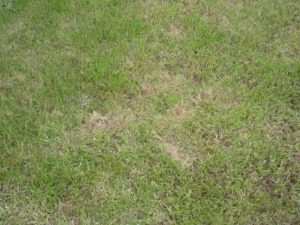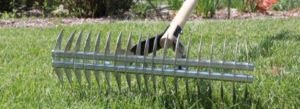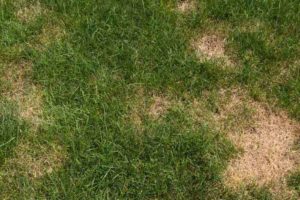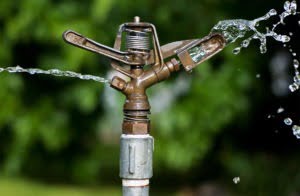Use this proven, easy-to-follow strategy for giving your lawn the right amount of water, which will give you healthy grass with a deep, strong root system!
Grass needs water for growth and development. In many areas of the world, there is neither sufficient rainfall, nor is it adequately spaced throughout the year to sustain a lawn without supplemental water supplied by irrigation.
Test It Out
You may need to water your lawn if you:
- See wilted, curled or folded grass blades
- See a color change from vibrant green to dull blue-gray
- Step on your grass and it takes more than a minute for your grass to bounce back or if footprints/lawnmower tracks are still visible after a half hour or more
Prep Your Lawn
It’s crucial to properly prep your lawn or it won’t be able to effectively retain water.
- To prevent matting, remove thatch early in the season
- Aerate in spring, mid-summer or early fall.
- Fertilize the soil in spring to add add valuable nutrients
- Use a rake to put down 1 inch deep layer of compost on the lawn
Make A Watering Schedule
- Water either in the evening or early morning to minimize water lost to evaporation.
- If your lawn is subject to fungi, water in the early morning (before sunrise) so excess moisture can evaporate.
- Start a watering schedule in time for the growing season, after the soil has partially dried.
Use Proper Equipment
Soaker hoses allow water to penetrate slowly to encourage deeper roots, while sprinkler systems allow you to adjust the amount of water distributed to your lawn at specified times.
- Above-ground sprinklers cover large lawns effectively.
- Make adjustments so that the water falls only on your lawn or garden and is not wasted on sidewalks, driveways, roads or buildings.
- Adjust the pressure so water can slowly penetrate the soil without puddling or running off.
- Check equipment regularly to ensure that all components are operating properly, regardless of the type of sprinkler you have.
Measure Your Water and Time
Most homeowners tend to over-water their lawns and waste water. With one of our core values being sustainability, we realize that water is a valuable resource and needs to be used as efficiently as possible! The amount of water an established lawn requires and receives will help determine drought resistance and its ability to withstand use, both of which are very important.
The healthiest lawns are watered heavily at infrequent intervals – once a week. Running the sprinkler all night will set up your lawn for disease, and frequent, light watering causes the grass to grow shallow roots and will set it up for trouble in hot weather.
Let your lawn completely dry out before watering; most grass can tolerate dry conditions for a reasonable period of time.
- Lawns generally need about an inch of water a week to encourage roots to go further into the ground. This makes them more resistant to a dry spell.
• Use a rain gauge to keep track of rainfall so you know how much water your lawn needs. - Measure your sprinkler output so you can set your watering times properly. You can measure the output of your sprinklers by arranging empty and cleaned tuna cans or cat food cans across your lawn. If you do not have empty cans, several coffee mugs will also work well. Then run the sprinklers for 20 minutes and use a ruler to measure the water depth across the yard. After 20 minutes, add all the depths together from each container in your yard and divide by the total number of containers to obtain an average for the whole yard. Then multiply that number (the total yard measurements over 20 minutes) by three to average your total sprinkler output per hour (60 minutes).
- Every 15 minutes, check the depth of penetration in the soil at different places in the irrigation pattern. Use a screwdriver or large spike to determine how dry your lawn is. If it can be pushed in easily, then it’s moist so you can hold off on watering. If it takes a lot of pressure, then the soil is too dry. Only water when it is difficult to push into the ground or is dry at a depth of 4-6 inches. This is a good time to check to see how deep your grass roots are growing as well! If they’re not reaching beyond 2 to 3 inches, your soil is most likely compacted and would benefit from aeration. See more info about aeration here.
- Move or adjust the sprinklers to achieve uniform coverage.
Maintaining the health of your outdoor space doesn’t have to be difficult as long as you know the proper lawn care techniques! Following the right watering practices improve the quality of your lawn, provide important environmental benefits, and save you time and money.







